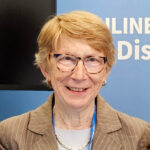A European Reference Network (ERN) is a virtual network comprised of healthcare professionals spread around Europe. Their objective is to tackle complex or rare diseases and conditions that necessitate highly specialised treatment and a concentration of knowledge and resources. Indeed, often a disease is so rare that expert knowledge is not available in the patient’s country or region and ERNs facilitate the exchange of knowledge between healthcare professionals across borders. Each ERN has a coordinator who convenes “virtual” advisory boards of medical specialists across different disciplines, using a dedicated IT platform and telemedicine tools to review a patient’s condition for diagnosis and treatment. The patient doesn’t travel but knowledge does.
The first 24 ERNs were launched in 2017, involving more than 900 highly-specialised healthcare units from over 300 hospitals in 26 Member States. Please find the press release from the European Commission here , their ERN Fact Sheet here and the ERN Brochure here.
For more information about ERNs, please visit the European Commission’s webpages.
Navigation
ERN flyers (translated)
Cross-Border Healthcare
One of the key objectives of the ERN is to provide cross-border healthcare which means that as a patient you can access expert healthcare services in another EU country, which is not your home country. According to the European Commission, “EU citizens have the right to access healthcare in any EU country and to be reimbursed for care abroad by their home country”.
Information about national contact points, health insurance institutions and healthcare providers can also be found on the European Commission’s website.
Information leaflets
Planned and Unplanned Treatment Abroad – Two Legal Frameworks and their Application
Accessing Planned Treatment Abroad – Your Checklist
Accessing Medical Treatment Abroad – Κnow your Rights
Accessing Treatment Abroad – Governing Legislation at a Glance
What is ERN-RND?
The European Reference Network for Rare Neurological Diseases (ERN- RND) aims to address the unmet needs of more than 500,000 people living with RNDs in Europe. 60% of those are still undiagnosed. Through coordination and knowledge transfer, ERN-RND shall establish a patient-centred network to address the needs of patients with RND of all age groups, with or without a definite diagnosis, by implementing an infrastructure for diagnosis, evidence-based management, treatment and collection of patient data.
Objectives of ERN-RND
- To significantly increase the overall percentage of RND patients with a final diagnosis
- To improve and harmonise care of RND patients across the EU
- To develop, share and implement care pathways and guidelines for all RND groups represented in ERN-RND
- To create, develop and enhance constituents’ capacity to design, implement and supervise RND training, education and capacity building measures at the level of member states and of the network
- To develop a comprehensive and data based European RND cohort to better understand these conditions and thus improve their management and help developing and testing treatments
- To define minimum quality and interoperability criteria for RND registries
Disease groups covered
- Cerebellar Ataxias and Hereditary Spastic Paraplegias
- Chorea and Huntington‘s disease
- Dystonias, Paroxysmal disorders and Neurodegeneration with Brain Iron Accumulation (NBIA)
- Frontotemporal Dementia
- Leukoencephalopathies
- Atypical Parkinsonism syndromes: Genetic PD, Multiple System Atrophy, Progressive Supranuclear Palsy, Corticobasal degeneration
ERN-RND will expand over time in terms of the diseases it covers and in terms of EU countries involved.
These 6 Disease Groups (DGs) gather the respective experts from all ERN-RND member hospitals. They work on DG specific topics such as care standards, specific dissemination of disease knowledge, etc.
Each DG is lead by several coordinators.
Their work is available in the Disease Knowledge documents which can be found in the Disease Knowledge section of the website.
Coordinator ERN-RND

Holm Graessner
Coordinator ERN-RND
Institute of Medical Genetic & Applied Genomics
University Hospital Tübingen

Ludger Schöls
Clinical Coordinator ERN-RND
Department of Neurology
University Hospital Tübingen
ERN-RND Coordination Office

Carola Reinhard
Project manager

Sophie Ripp
Project manager

Christine Diaite-Hecht
Training manager

Christina Vossler-Wolf
Registry manager

Aikaterini Filippidou
Communication manager

Lena Urbanczyk
Support for administrative project management

Tamara Martin
CPMS Helpdesk

Alisa Jemelka
CPMS Helpdesk
ERN-RND Board
The ERN-RND Board is the main decision taking body of ERN-RND. The board sets the strategy for the network. The board is chaired by the network co-ordinator. The membership of the board includes the individual HCP leads (or their nominated deputies). The board meets twice a year.
Patient Advocates
EURORDIS, the European umbrella organisation of patient organisations and a non-profit alliance of 798 rare disease patient organisations, has established a European Patient Advocacy Group (ePAG) for each ERN disease grouping. Patient organisations can become ePAG member organisations and patients can become ePAG representatives (2016 and onwards).
You can find the Annex to the ERN-RND Network Agreement regarding the rules for the patient advocacy group here.
Information on ‘Thinking of getting involved in the ERNs as an ePAG advocate’ here and the Patient Partnership Framework for ERNs here. More detailed information on European Reference Networks and European Advocacy Patient Groups here and here.

Astri Arnesen
European Huntington Association
Representative for: Choreas & Huntington’s Disease
Email

Ruth Blanco
European Huntington Association
Representative for: Choreas & Huntington’s Disease
Email

Monika Benson
Dystonia Europe
Representative for: Dystonia
Email

Edwige Ponseel
Dystonia Europe
Representative for: Dystonia
Email

Mary Kearney
Friedreich’s Ataxia Research Alliance Ireland
Representative for: Ataxia/HSP
Email

Lubomír Mazouch
Czech Association of Atypical Parkinsonian Syndromes (Spolek pro Atypické parkinsonské syndromy)Representative for: Atypical Parkinsonian Syndromes
Email

Natalia Grigorova
Bulgarian Huntington Association
Representative for: Choreas & Huntington’s Disease
Email

Sara Hunt
Alex, The Leukodystrophy
Charity
Representative for: Leukodystrophies
Email

John Gerbild
Denmark Association for Ataxia and HSP EURORDIS Board Member
Representative for: Ataxia/HSP
Email

Lara Bruschinski
Representative for: Frontotemporal Dementia
Email
Work Packages
Activities of the ERN-RND are structured in eight dedicated Work Packages (WP):
| WP | Title |
|---|---|
| 1 | Coordination |
| 2 | Dissemination |
| 3 | Evaluation |
| 4 | CPMS activities |
| 5 | Other digital activities of ERN-RND (ERN-RND registry) |
| 6 | Training and education |
| 7 | Guidelines, Clinical Decision Making Tools and Patient Journeys |
| 8 | Care access and quality |

